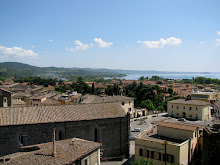Today Amanda presented on...
Transnational Corporations and the Globalization of the Food System - William D. Heffernan ad Douglas H. Constance
Commodity approach:
Taking a look at a specific commodity and analyzing it in terms of the labor forces used within the production of that commodity. You analyze either the labor or methods – the different labor processes and technological factors of production. What policies effect labor processes and technological factors? The benefit to the analysis of data from a commodity systems approach is that you get a chance (when working with small production of commodity) to look at the different processes within a commodity. The negative side of the commodity approach is that once you move towards larger productions – such as in transnationals – the approach breaks down as many tnc’S operate in various locales. A convenient way to look at how production is different inside of different geographic locales.
Transnational corporation approach – or TNC approach.
Analyzing data for entire business in its various different locales.
What happens with each of these approaches? Taking a look at the situation from a transnational approach is important. Corporations focus on more then one commodity and are involved in several different things. Not just food – wool, cocoa butter, seeds, seafood, all with other relationships to separate fields and subfields. Just looking at a single commodity does not provide the whole picture of a Transnational’s scope.
- Article looks at the Broiler industry in chicken raising, and looks at how that commodity has grown from the domain of independent farmers to, around WWII. Pork and beef consumption went down and chicken did not – producers around Maryland didn’t want to participate in subsidies, so government went down South to get those farmers to jump on subsidization contracts In that process, we went from small local chicken farmers (involved in the whole process) to farmers who only own the facilities within which the chickens are raised – the government owns eggs, chickens, and feed. Farmers are dependent upon government.
Farmers standard of living has gone from self-sustaining to assembly line – turn an egg into a very large chicken. Also changes way in which animals are being raised. From subsidized contract farm came into corporation farming, no longer using local farmers who own different locations, but taking over the entire process. This has changed the focus of what local production is - no longer your own but all controlled by a big company.
- The change in relationship from independent farmers being controlling factor in a situation, with control of their own means of production (chickens, equipment, whatever) for different corporations, to a system of larger corporations controlling the farmers, chickens and feed. A role reversal of sorts occurred in this process.
- Originally, nation state and geographic region controlling policy, and small corporations in an area has ceded to giant transnationals with so much information that they are amplified in the nation-state, giving them great power in the global economy.
- The article is biased against transnationals, which also buy each other out and take up more and more of the market share and controlling information. Not necessarily a benefit in these TNC's in the shift from small farmers to big TNC's who may be involved in agriculture but also involved in fuels and feeds, not just food.
- The authors find a TNC approach superior to a commodity approach as, in this era of globalization, it provides a more comprehensive picture.


No comments:
Post a Comment